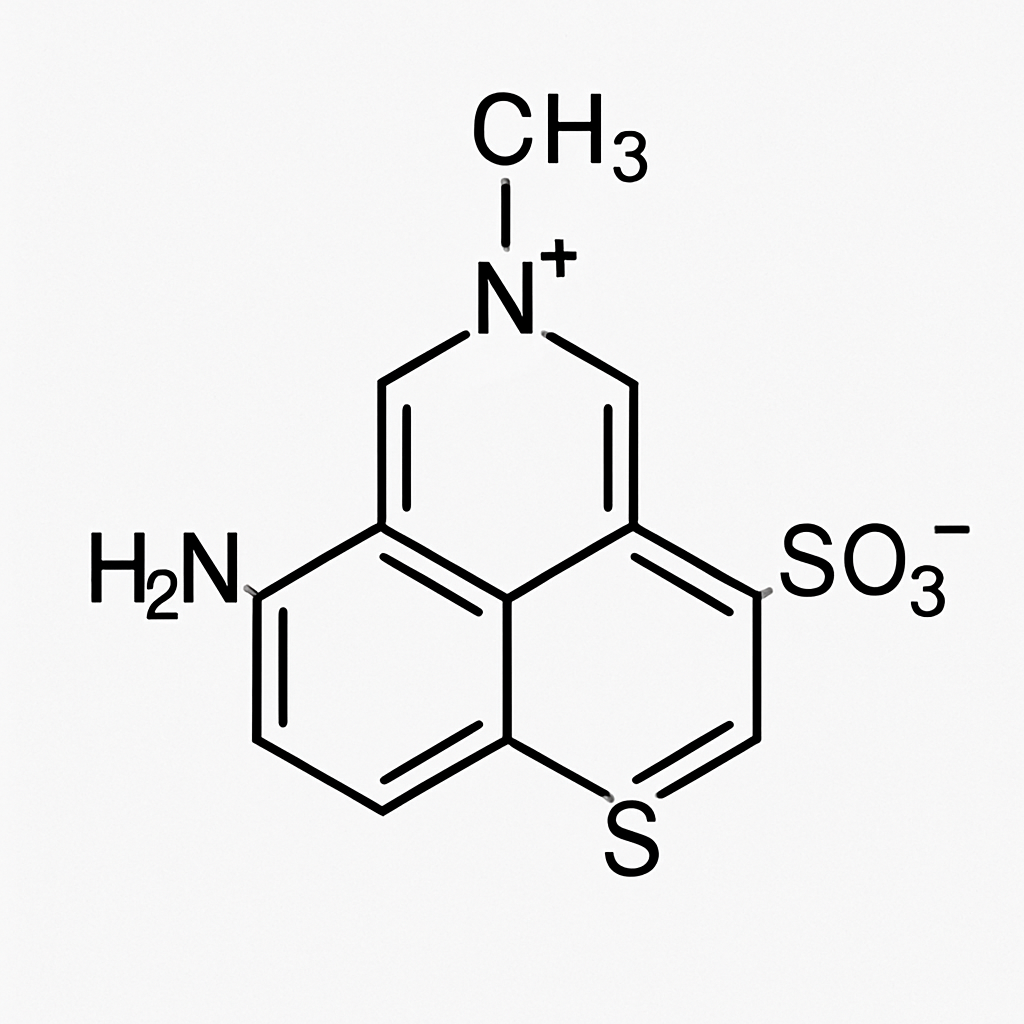Methylene blue is a compound with a fascinating history and a broad spectrum of applications. This substance has many uses. It was first used as a dye in textiles. It also plays an important role in medicine. Scientists and health workers find it fascinating. In this article, we will look at the many uses of methylene blue. We will explain how it works and explore its benefits. We will also answer common questions about its safety and proper dosages.

Today, methylene blue is primarily recognized for its medical applications. Its ability to work with biological systems in the body makes it a useful tool for treating different conditions. Beyond its medical uses, methylene blue has also found a niche in scientific research and other industries, underlining its multifaceted nature.
How Does Methylene Blue Work?
Methylene blue operates by engaging with multiple biological systems within the body. It is well-known for carrying electrons. It plays an important role in cellular respiration and energy production. This capability to enhance cellular function is what makes it particularly beneficial in treating certain medical conditions, where energy production may be compromised.
Methylene Blue in Medicine
Methylene blue boasts several critical applications within the field of medicine. Its versatility is evident through its varied uses, addressing both common and rare medical conditions.
Treatment of Methemoglobinemia
Methemoglobinemia is a condition characterized by the inability of hemoglobin in the blood to release oxygen efficiently. Methylene blue helps treat methemoglobinemia. It changes methemoglobin back to its normal form. This restores the blood's ability to carry oxygen. This conversion process is vital for patients suffering from this condition, as it directly impacts their oxygenation levels and overall health.
Antidote for Certain Poisonings
In instances of poisoning with chemicals such as cyanide and carbon monoxide, methylene blue functions as an antidote. It plays a pivotal role in reversing the toxic effects by enhancing cellular respiration and improving oxygen delivery. This makes it a key part of emergency medicine. In these situations, time is crucial to reduce the effects of poisoning.
Surgical Applications
Surgeons frequently utilize methylene blue as a staining agent to delineate specific tissues during procedures. This application enhances the precision of surgical interventions, allowing for more accurate and effective operations. By highlighting particular areas, methylene blue aids surgeons in achieving better outcomes and reducing the risk of complications.
Benefits of Methylene Blue
Methylene blue offers a plethora of benefits, extending beyond its traditional roles in medicine. These benefits contribute to its growing popularity and application in various fields.
Cognitive Enhancement
Some studies suggest that methylene blue may possess neuroprotective properties, potentially benefiting cognitive functions. It is being explored as a treatment for conditions such as Alzheimer's disease and other forms of dementia. The potential for cognitive enhancement through methylene blue opens new avenues for research and treatment in neurological health.
Antimicrobial Properties
Methylene blue exhibits antimicrobial activity, making it a valuable asset in treating infections. Its ability to kill bacteria and other pathogens enhances its effectiveness in certain medical treatments. This antimicrobial property helps fight infections. It also prevents the spread of resistant bacteria strains.
Mood Enhancement
Evidence suggests that methylene blue may have mood-enhancing effects. It is believed to increase serotonin levels, potentially alleviating symptoms of depression. This mood-enhancing capability adds another dimension to its therapeutic applications, providing hope for individuals seeking alternative treatments for mood disorders.
Dosage and Administration
The dosage of methylene blue varies depending on its intended use. Understanding the appropriate dosage is crucial for maximizing its benefits while minimizing potential risks.
Oral Dosage
For oral consumption in humans, the typical dosage ranges from 0.1 to 4 mg per kilogram of body weight. Adhering to a healthcare provider's guidance is crucial to determine the appropriate dosage for specific conditions. Proper dosage ensures efficacy while reducing the risk of adverse effects.
Intravenous Dosage
Methylene blue can also be administered intravenously, particularly in emergency situations such as methemoglobinemia. The dosage and administration should always be performed under medical supervision to ensure safety and effectiveness. Intravenous administration allows for rapid action, which is essential in critical care settings.
Safety and Side Effects

Is methylene blue safe? Generally, methylene blue is considered safe when used as directed. However, it can cause some side effects, especially at higher doses. Common side effects include nausea, dizziness, and skin discoloration. It is important to use this under the guidance of a healthcare professional. This helps reduce risks and keeps patients safe.
How Long Does Methylene Blue Stay in the Body?
The time methylene blue stays in the body can change. This depends on factors like the dose and the person's metabolism. Typically, it is eliminated from the body within a few days, but specific details can vary. Understanding its pharmacokinetics helps in planning appropriate treatment schedules and monitoring therapeutic outcomes.
Can You Take Methylene Blue Daily?
While methylene blue has various applications, daily use should only be considered under medical advice. A healthcare provider should carefully assess the benefits and risks before adding it to a daily routine. Regular monitoring and assessment are vital to ensure its long-term safety and effectiveness.
Supplements and Methylene Blue
If you're considering taking methylene blue, you might wonder what supplements to take with it. It's a good idea to talk to a healthcare professional. They can help make sure that any supplements or medications you take do not interact badly with methylene blue. Comprehensive guidance helps in creating a balanced and safe supplementation plan.
Conclusion
Methylene blue is a versatile compound with a wide array of uses in medicine and beyond. From treating methemoglobinemia to enhancing cognitive function, its benefits are numerous. However, like any medical treatment, it should be used carefully. Always follow the advice of a healthcare professional to ensure safety and effectiveness. Whether you're considering methylene blue for medical treatment or exploring its broader applications, understanding its uses, benefits, and potential risks is essential for making informed decisions.
By studying the history and uses of methylene blue, we can see how it is used in modern medicine. This also helps us understand its potential for the future. Its flexibility and many benefits make it an important compound for research and development. This offers exciting possibilities for future medical advances.
This article was written by Dr. James, a Yale-trained neurosurgeon.


Share and get 15% off!
Simply share this product on one of the following social networks and you will unlock 15% off!